#sole survivor iggy
Text












Storyboard project i did for school! please dont mind how inaccurate my power armor stuff is and how dumb nick is in this i wanted to do fallout oc stuff n i had to make it work
#fallout 4#fallout#fallout ghoul#fallout fanart#fallout 4 companions#fallout 4 fanart#fallout nick valentine#nick valentine#piper wright#sole survivor iggy#fallout oc
451 notes
·
View notes
Text
An Analysis of the Character of Artificer
Due to the design of Rain World as a survival simulator of a little creature in an ecosystem, the capacity for exploring complex narratives of the player characters within the game is comparatively limited. Even still, Artificer's campaign presents a clear and explicit storyline, both directly and indirectly through the way the world is shaped by their actions. In one way or another, Artificer's campaign presents Arti as someone who has committed mass slaughter and genocide of the scavenger population on Pebbles' facility grounds without driving home the implications of their actions until the very end of the campaign, allowing ever more carnage and destruction that only feeds into the themes of their story. In this post I'll be going into why I think it can be easy to overlook these themes, as well as how the mechanics of the game and some aspects of the code further assist the story being told in Arti's campaign.
*Note: There was previously a paragraph about NPC Arti's, but it has since been removed.
Preface
Throughout this post, I will be using they/them pronouns for Artificer. This isn't a reflection of my headcanons on them, but rather just a way to analyze them as a character within their story with fewer biases, I guess. I don't really care what pronouns you prefer for Arti, this is solely just based on my default of they/them pronouns for any and all slugcats.
Aside from that, this post primarily discusses the chieftain scavenger ending, wherein Arti reaches the throne room in Metropolis and kills the chieftain scavenger. The alternative ascension ending is acknowledged, but will not be examined in depth.
On top of that, whenever I make any comparisons between Arti and another slugcat, I will be using Survivor's stats and general gameplay as my default unless explicitly stated otherwise. The term 'slugcat' will be used in lieu of an actual name except when Arti is concerned.
Rain World's Design
Rain World is, at its core, a survival simulator. The player is given the bare minimum of tools needed to survive, and then is dumped into the game and left to figure everything out on their own. What's edible, what's friendly, what isn't, all of that is left for the player to stumble around, fail, and discover. Iggy is there to help sometimes, but by and large, the player is on their own.
One thing players will quickly realize is that enemies are eager to hunt them down and eat them. The first introduction many players have to enemies is likely either a green lizard, a tanky, resilient behemoth, or a pink lizard, which is nimble enough to chase the player up poles. At the same time, it's not hard to recognize that even though enemies will kill the player, they are all doing it to get a meal, something that the player is also trying to do. It's nothing personal, unlike how enemies will immediately attack the player for the sole reason of them being the player in many other games. It's simply a matter of survival.
In this manner, Rain World presents a dichotomy of player versus enemy. Either the player escapes the clutches of an enemy and survives, or the enemy kills the player and gets a meal to fill its belly. Ideally, the player would never run into any enemies at all—some cycles may prove to have such fortune—but most of the time, the player will be forced to deal with enemies and have to figure out how to escape dangerous situations created by these enemies. There's a variety of ways with which to do this; using spears to dispatch enemies is a quick and clean option if the player is experienced enough, but in a lot of cases, simply running will suffice.
There's not much of a focus on fighting enemies, however. Rather, the focus is on surviving them, and the enemy does not need to die for the player to survive. On top of that, there's little to no narrative weight applied to the survival of the player, or lack thereof. The world moves on regardless of if the player lives or dies, whether they sleep with a full belly or with hunger pangs wracking their body. The basic gameplay loop is both simple and complex: Survive, or don't. How that is achieved is up to the player.
Naturally, players want to survive. They want to live to explore and experience the game and any story that may be present. With whatever means are necessary, players will fight to survive, in a way that very much embodies what the slugcat they're playing as may feel too. The slugcat may, on the surface, be a blank state, but through the players' actions, they come to life in how they choose to survive.
The Design of Artificer's Campaign
Then we have Artificer. The first action performed by them in their campaign is to eat a scavenger's corpse, in a room littered with several other scavenger corpses. The implication is clearly that they killed all of them, a fact further confirmed by the immediate aggression of the scavengers to the left of Arti's spawn. It shouldn't take long for the player to notice that every scavenger they come across instantly becomes aggressive, a feature that is unique to Arti's campaign.
Regardless of how the player may feel about scavengers prior to playing Arti's campaign, if they want to survive, they are forced to kill scavengers. After all, the scavengers show them no mercy, so why should the player show restraint? And so begins a trail of bloodshed, one that follows both the player and Arti as the campaign progresses. Death is common, normalized, and quickly swept aside; it's all for the sake of survival, anyways. If it wasn't the scavengers, then it would be the player, and no one wants that.
By framing it as a matter of survival, the game itself sets up a framework for desensitization to all the murder that is occurring. The player's actions are always immediately justifiable with the notion of survival: Rather the scavenger than me. Body counts of ten, twenty, even up to fifty can happen due to scavengers actively seeking the player out to kill them, and if the player wants to live, the scavengers all must die. It's exceedingly easy to see the number of deaths tallied at the end of the cycle and rationalize it with the idea that it was necessary for survival. And for Arti's campaign, that's not untrue. In positioning the campaign as player versus scavengers, either the player kills the scavengers and lives, or the scavengers kill the player.
However, this ignores the fact that the scavengers are also doing this as a means of survival. They, too, are simply trying to survive. They are not killing Arti—or the player, who is acting as Arti—for the sake of bloodshed. They are doing it out of necessity.
Rain World Creature AI and Scavenger AI
One of the things Rain World is most lauded for is its creature AI. Creatures are, in many ways, not created to be enemies, but rather to fill in a niche in a much bigger ecosystem. What the player encounters in any given cycle is often random. The lizard that killed the player in their last cycle may have wandered off someplace new this cycle, allowing the player to progress further. What creatures do is also managed by this AI, which can sometimes lead to unpredictable behavior.
Scavengers are the creatures whose behavior is most often cited as unpredictable, in part due to having the most AI complexity out of any other creature present in Rain World. They operate on a level similar to that of the player, and also think similarly to the player in many aspects. Sometimes, scavengers may kill players for the crime of simply existing too close to them, or because they approached a scavenger when its back was turned and their presence startled them, or for some other arguably asinine reason that the player may find unfair. However, scavengers do not have a way of determining whether a slugcat is friend or foe until the slugcat is in their vicinity, much in the same way that players do not know whether a new creature is dangerous or not when they first encounter it until they interact with it. "Better safe than sorry" is a philosophy that almost all players will have used at one point or another, wherein they will kill a creature for simply existing because they were scared. Scavengers are no different.
Scavengers are also one of six different creatures with a reputation system in Rain World, and one of four with reputation systems that the player can meaningfully influence (the other three being lizards, squidcadas, and jetfish). Of these four, scavengers are the only creature the game ever teaches players to befriend. If following Iggy, the players are instructed to take a pearl and trade it with scavengers at the lower Garbage Wastes scavenger toll, and from there it is not a far leap to think that other scavengers may also like to receive pearls as gifts. They will also accept many other things as gifts, such as vulture masks, karma flowers, even spears, all of which increases the player's reputation among scavengers by some amount. It is easy, almost expected, for players to raise their reputation with scavengers, and many players opt to do this for the sake of simplicity. By going to a toll and paying it twice across two different cycles, the player's reputation will be sufficiently high enough that scavengers in a given region will never be a threat to them.
Conversely, in most cases, the player has to actively choose to anger and harm scavengers to decrease their scavenger reputation. The player has to go out of their way to steal items from scavengers, cross tolls without paying, or kill scavengers to draw their ire. Aggression in response to that is natural; the player has demonstrated that they are either untrustworthy, dangerous, or both, and scavengers are primarily concerned with their own survival. The act of scavengers killing the player is less personal than it is that they simply want their kind to be safe. The world does not revolve around the player. The world does not need to worship the choices the player makes. If they choose to harm creatures, they will face the consequences of their actions, and it just so happens that scavengers are often the most capable of handing out these consequences.
The reputation system for all creatures with reputation runs on a scale of +100, maximum possible reputation, to -100, minimum possible reputation. At 0, the player's reputation is neutral. Scavengers are uncertain around the player, and may react differently depending on their personality traits. Below 0, scavengers are more likely to be afraid of the player and attack them. Below -75, scavengers begin to send kill squads after the player, which always know where the player is and will automatically pathfind to them. In virtually any case, it is impossible for the player to reach -75 reputation or lower with scavengers without actively choosing to kill them, and by that point, the automatic aggression of scavengers is warranted. If the player has shown no mercy to the scavengers, the scavengers have no reason to show mercy to the player either.
Artificer's Reputation
Artificer's starting reputation for all creatures is lowered, and as the player progresses through their campaign, it is likely that these values will only continue to lower. Killing any creature lowers an All Reputation value, which decreases reputation across the board; due to Arti's carnivorous diet, bloodshed is virtually inevitable.
Scavengers are uniquely exempt from All Rep changes, running entirely on their own reputation system, and for Arti in particular, scavenger reputation is locked to -100. It is impossible for Arti to raise their scavenger rep (without the use of mods), which forces the player to fight any scavenger they come across. The fact that their scavenger reputation is locked to the lowest possible value is also indicative of their past interactions with scavengers. Whether the player likes it or not, Arti has been killing scavengers for far longer than the game shows, enough that nothing they will ever do will atone for the deaths they've caused. There is no peaceful way forward between Arti and the scavengers. Any interaction they have must be marked in blood.
The only thing the player can do regarding scavengers is kill them. If they want to survive, there must be death. The player, as Arti, can only perpetuate the violence that has already been wrought, because the scavengers will not stop fighting for the survival of their own kind, and by the nature of Rain World as a video game, the player also cannot stop fighting. If the player is willing to see the campaign through to the end, there is only one way forward.
A Story Painted in Blood
Of course, if you've ever played Arti's campaign (or watched someone else play it), you know the reason behind Arti's hatred for scavengers. Two pups, dead by their heads. An understandable resentment rose from this; no one wants to grieve the loss of a loved one, let alone a parent grieving the loss of their children. Perhaps there was some initial notion of revenge in Arti's actions, fueled by those early moments of grief, because grief changes people. Grief is ugly, raw, and complex, and can twist even the most well meaning people into the most horrible versions of themselves. Desperation to avenge the deaths of their children could have led to the idea that killing the scavengers would atone for their loss. Or, in the throes of grief, Arti lashed out and grievously injured a scavenger, drawing the anger of the other scavengers at one of their kind being harmed, which started a cycle of violence between Arti and the scavengers. All sorts of theories and conclusions about the initial reason behind this bloodshed can be drawn from the loss of Arti's pups, but none of them would have any concrete basis.
What we do know is that none of that bloodshed changed anything. No death of a scavenger could ever bring Arti's pups back, and clearly it did not soothe their grief either. Everything that we are shown that Arti has done in the past has done nothing but fuel the situation that we see in their campaign: Endless violence, driven by the need to survive, which only further perpetuates the violence. It's a never ending cycle of blood and death that neither Arti nor the scavengers can break out of, because none of them are willing to be the first to stand down.
The survival aspect, too, intertwines with whatever notion Arti may have had of revenge. We are shown in no uncertain terms that their goal is to exterminate the entire scavenger population, and loosely implied beside that is that the deaths of their pups caused this. But genocide is not retribution; killing every scavenger they come across does not avenge their pups, because their pups are dead and no longer have a say in what they wish could be done. Everything that Arti does now is driven only by their own desire to keep pushing the cycle of violence forward. Is it revenge or survival if every scavenger Arti comes across must be killed before they are killed first? And this uncertainty only further fuels the flame. Every scavenger, every enemy that Arti comes across must die, because if it doesn't, then Arti will die (and their pups will have died in vain). With every push for survival that Arti makes, every enemy they strike down, they only make more enemies, endlessly perpetuating the violence that they attract.
The player only contributes to this. Choosing to survive means choosing to murder. To live is to survive at the detriment of everything in your way. And on top of that, many players choose to push it even further, hunting for the sake of hunting, killing for the sake of killing. Rain World is a video game in the end, but every death that the player causes is still, always, a death within the context of this world. Where even is the line between killing for the sake of survival and murder for the sake of murder when playing as Arti? And, if the line exists, does it mean anything? The violence only continues onward, no matter the answer.
Even if the player chooses to reject this way of life, hunting down the echoes and going to the Void Sea to ascend, Arti is at best one level of karma short of karma 10. The player, if committed to pacifism, has to wait for a viable scavenger corpse, or they must kill a scavenger themself to successfully bypass the guardians and enter the lower caverns of the Depths. This also does not erase however long Arti has chosen to wage war on the scavenger population, because once again, there is never any chance for Arti to increase their scavenger reputation. It has all gone too far, and Arti cannot change what has been done. Some things simply cannot be forgiven.
Cognitive Dissonance and Player Theory
Despite all of this, it is still easy for players not to register the impacts of what they're doing until potentially the very end of Arti's campaign, where a slideshow of Arti killing every scavenger in sight as they flee in terror is shown. The impact of any karma the player may have gained all being confiscated, once again and permanently locking Arti's karma at 1, as well as the post-game artwork that shows them covered in blood, are potentially the first instances of the player realizing how much death and destruction they've caused. It takes being slapped in the face with a visual representation of the trail of death they've left behind for many players to think about Arti's story as something not of triumph, but horror.
Obviously, one of the reasons behind this is the fact that Rain World is a video game. The player is simply carrying out a story, merely doing things because they're told to, directly or indirectly. Killing things is just part of the game, after all. Analysis of the game's events is done only by a subset of fans of a piece of media, in particular this sort of deep dive into what the actions of the player character mean within their universe. To a lot of people, this is just a game, and that's fine.
Building on that reason, however, is that Rain World is exceedingly good at dulling the impact of the death within the game. Every kill is simply just a number on the screen. Three lizards dead is just three lizards dead, and maybe a good meal from one of them. Twenty scavengers killed is just twenty scavengers. These are all pixels on a screen, little blips of light that don't mean anything the moment you turn your computer off. Killing something in Rain World is just a triumph of the player over the enemy, nothing more, nothing less. The player is simply surviving.
Taking a step closer to the world crafted inside the game, however, causes things get more sinister. Twenty deaths—parents, siblings, children, friends, other loved ones, even acquaintances—is an unimaginable number to most people. Losing everyone that you've ever known and loved and cared for, just in the snap of a finger, is not a scenario that most people would ever want to think about, and one that, hopefully, only a subset of people will ever experience. This is not something that anyone should ever experience.
But this is the reality of life for the scavengers in Arti's campaign. At any given moment, Arti could swoop in and slaughter a scavenger's entire family. There is no certainty of whether someone will live or die, whether they will still be there next cycle, because Arti could have killed them for the sole reason of them being a scavenger. An entire culture, a budding civilization, even, leveled at the hands of one singular slugcat. That is genocide. It's no wonder that the scavengers kill Arti on sight, and that there isn't a way for Arti to ever increase their scavenger reputation. When they've destroyed that many families, killed that many friends, children, parents, grandparents, partners, what have you, a change of heart on their part means nothing. It won't ever bring those who have been killed back.
It's easy to overlook, isn't it? What does 100 dead scavengers mean to you? And what does 100 dead scavengers mean to a scavenger? The player's actions hold no weight in the real world, obviously, but that doesn't change the impact of what it means within the context of the game. And yet, it's so simple to justify. You're just surviving, aren't you? It's kill or be killed. Rather 100 dead scavengers than me.
That is the mastery of Artificer's campaign. The story and its themes tie so well into the game's mechanics and the way that players think that many do not question it until the end. For the brief moments of playing Artificer, you adopt their mindset, without even really trying to. And that makes everything that you do—and that Arti does—much easier to ignore, and just makes it that much more horrifying. And that is a good story.
#rain world#downpour#artificer#genocide#meta analysis#wonder how many people knew about the rep thing before this
54 notes
·
View notes
Note
How do you think the series would have changed if Jotaro, Joseph, and/or Polnareff had died instead of Avdol, Kakyoin, and Iggy?
ive talked about aus where jotaro is the only one to die but if it's basically like a death swap i think
part 4: kakyoin and holly go to morioh (it would also occur sooner than it does in canon, like 1995ish). some very strained but genuine half sibling bonding btwn josuke and holly. kakyoin rapidly fluctuates between very kind and very harsh as a mentor and it gives the kids whiplash until they find out the tragic backstory tm and theyre like oh. well what does that have to do with us we didnt do shit wtf dont be mean to us. kakyoin reflects. holly reflects. middle schooler josuke kills a man (kira)
part 5: iggy fills in what would have been koichi's role and then avdol appears. gio being dio's son would have a bit more of a Point if just cause avdol is watching him. avdol tags along cause he's concerned about mafia people making standusers and also he wants to watch gio. gio is like fine but dont get in my way. bruno is like "who's this" when gio shows up with avdol after black sabbath and gio is like "uhhhmmmmmmmmy uncle. great uncle" and avdol and bruno are both like sure. so avdol tags along. no kids die on his watch (avdol is 40 by the time va takes place so bruno and abbacchio are included as "children" to him). uhh yeah. i cant see avdol becoming a turtle (very stupid) but idk if i can see him living. he might though cause kakyoin being the sole survivor oh that'd fucking kill me
part 6: kakyoin and pucci duke it out. very messy. pucci is mad af cause all he knows about kakyoin is that he thought they were friends and then kakyoin abandoned him to dio. kakyoin is mad af cause all he knows about pucci is that he was friends with dio willingly and is carrying out his will today. i do think they'd get some understanding of eahc other but i do think it'd end with kakyoin having to kill pucci and kakyoin might cry about it for vairous reasons that i can't get into rn cause it's 1;30 am in my timeone andit kinda hurts to type rn. kakyoin and weather very good friends btw. foof is their daughter (theyre not in a relationshpi but theyre just like shared custody of ff). emporio is there as well of course. kakyoin might like adopt him honestly like jokes aside for real like genuinely adopt and sign papers and shit after everything. anasui is there
anyway i think the theme would shift cause like. the story is about a family. well the crusaders were family. kakyoin avdol and iggy were jotaro and joseph and polnareff's family. so they go on adventures ot make sure they can rest in peace. and yeah. no more jojo gimmick but i think it owuld still hold otherwise. anyway.
#sorry if this isnt the most interesting i jsut dont have a lot of thoughts abt deathswap aus other than aw that'd be fun to consider#(never considers it)#i just odnt have any concrete thoughts ig for the aftermath of it all#when i think of aus like this i tend to center on the events during and directly following#when it comes ot later stuff im like waves hand#unless im particularly interested in the au#but yeah#cass cries#jjba
5 notes
·
View notes
Text
Nick Cave:
A Subjective History for
the Uninitiated
On The Street, February 1988
Interview by Rob Miller
Collected by Katherine B.
It all started back in 1977 with the fresh-faced Boys Next Door comprising Phil Calvert (now in Blue Ruin) on drums, Tracy Pew (now sadly deceased) on bass, Rowland S. Howard (formerly of Crime and the City Solution, now of These Immortal Souls) on guitar, Mick Harvey (besides Nick Cave, the sole survivor of The Birthday Party and the driving force behind Crime and the City Solution featuring Simon Bonney on vocals, and also on guitar and later drums, and of course, young Nicholas. The Boys Next Door released one patchy album that featured one brilliant track written by Rowland called Shivers, which has since become widely regarded as a classic, although for different reasons that were to define The Birthday Party.
It was only really towards the end of 1980 after the Boys Next Door had effectively metamorphosised into The Birthday Party following a lengthy stay in England that the objectives of this new incarnation began to be obvious - taking Iggy and the Stooges and the Doors as rough points of departure, they vowed to go where no one had gone before, to become a real rock'n'roll band, extreme, confronting and even dangerous.
Certainly Nick Cave's notoriety stems largely from the wild and unrestrained performances of the Birthday Party days, who on a good night were absolutely compelling - physical to the point of making you sick, loud, desperate, ugly and beautiful at the same time and capable of blurring distinctions between performance and reality.. An exceptional performer, Cave instinctively knew how to squeeze the pathos out of an audience and he also did an unsurpassed line in on-stage abandonment, diving backwards into the drumkit still singing, to say nothing of startling swan dives into the audience and a repertoire of screams to rival James Brown. Even on a bad night, and there were enough of them, The Birthday Party were incomparably more exciting than any of their contemporaries with the possible exception of the Laughing Clowns.
Yet despite the fascinating development evident of the records, The Birthday Party were mere essayists in craft compared with what the Bad Seeds were later to do. With the exception of The Bad Seed EP, The Birthday Party were largely unrealised on vinyl despite some great moments on Prayers on Fire and Junkyard. (For sheer musical mayhem, check out Drunk on the Pope's Blood or some of their later live bootlegs instead). It was only when Cave's imagery began to take a more classical turn on The Bad Seed and Mutiny EPs that things began to turn around. The use of more conventional imagery drawn from biblical, literary and popular sources 'reconstituted in the deep south of Cave's imagination' combined with a more spartan musical framework resulted in a much more powerful music. Instead of trying to put everything in as they'd done with The Birthday Party (who eventually fell to bits after internal tensions had taken their toll - they couldn't have kept it up anyway) the Bad Seeds employed a sparser and more suggestive approach. The tempos were slowed down and the music actually gained in power and resonance.
To date the Bad Seeds have released four albums to date including the well-received album of covers, Kicking Against the Pricks and as with The Birthday Party each has seen a conspicuous improvement on the last even allowing for individual favourites - starting with From Her To Eternity through The First Born is Dead to the current Your Funeral... My Trial, generally agreed to be their best so far.
Reprinted with permission. Copyright by Rob Miller, 1987. Wholesale publication requires the written consent of the author. Contact site administrator for details.
0 notes
Photo

black widow
#my art#blood#stitches#fallout 4#fallout:4#fallout4#sole survivor#fallout#this is a reference to the perk not the iggy azalea song#I swear#spider lily#artists on tumblr
15 notes
·
View notes
Text
You know how in Fallout, the protagonist (being nameless until the player picks) is called the Sole Survivor, the Courier, etc? I don't know why, but the fact that The Outer World's protagonist is officially referred to as "The Unplanned Variable" is really funny to me. It's just the right amount of uniqueness and self-deprecating humour. I like it.
I also like the fandom nickname for the protagonist, "The Passenger." Because, you know. Iggy Pop.
141 notes
·
View notes
Text
Description and Info for Fanfic
The events in the story take place a few months after the sole survivor, in this case Nora, leave vaults 111. There are also events the play on a popular but debunked fan theory that I personally love that ties the Elder scrolls V Skyrim and the Fallout universe together. If you have any questions please ask. Thank you for reading my fan fiction and I hope to write more.
How to pronounce:
Kimikyo = Kim-me-k-yo
Ami = Ah-me
Kai= K-eye
Kigra= K-high-grah / Kiggy = K-iggy
Azumiral = A-zoom-eh-real
Takito= Tah-key-tow
Aiko= Eye-Koh
0 notes
Text
Movie Selections 2017 Florida Films Festivals
The 26th Annual Florida Film Festival, delivered by Enzian Theater and held all through Central Florida every April, offers almost 200 component and short movies from nations around the globe, notwithstanding big name visitors, uncommon occasions, film gatherings, and gatherings. The current year's celebration incorporates contending films in story highlights and narrative projects, in addition to unique screenings of sustenance films, worldwide movies, midnight motion pictures, family programming, and Florida films. A little examining of download movies shows up beneath.
Giant
Anne Hathaway and Jason Sudeikis star in this sci-fi drama in which the activities of a shallow gathering young lady coming back to the place where she grew up after a separation with her sweetheart are by one means or another associated with a goliath creature assaulting individuals in Seoul, South Korea. Gloria's unintentional reconnection with a previous grade school companion (now a bar proprietor who contracts her as a server) uncovers the inception of this bizarre heavenly event. At the focal point of the insanity, Gloria (Hathaway) and Oscar (Sudeikis) each undertaking their own particular form of insane: She experiences difficulty with connections; he experiences difficulty with separations. Together, they are the catastrophes at the core of this debacle film. Mixing parody, dramatization, flashbacks, and science fiction impacts, this type blending concoction conveys a fascinating story with powerful analogies about the potential creatures inside each of us. Coordinated by Nacho Vigalondo. Likewise stars Austin Stowell, Tim Blake Nelson, Dan Stevens. Run time: 110 minutes. MPAA rating: R (for dialect). 3.5/5.
Honky Tonk Heaven: Legend of the Broken Spoke
This fun narrative around an Austin, Texas, honky tonk praising its 50th commemoration screens in the Music Sidebar program. The Broken Spoke, possessed and worked by a couple group James and Annetta White, respects the greatest names in down home music to perform on its unassuming stage for local people and voyagers from everywhere throughout the world. Entertainers rush to call attention to that The Broken Spoke is not a tasteful move corridor where benefactors get spruced up, nor a show lobby where individuals come just to tune in. This is a honky tonk where performers come to play music so individuals can move for a considerable length of time. Known for its credible Texas climate, long-standing custom of solely blue grass music groups, and southern style steak (utilizing Annetta's family formula), this outstanding foundation stays unaltered in the midst of the quickly creating neighborhood around it. The fantastic film inspects the music, sustenance, family, culture, and history behind The Broken Spoke. Coordinated by Sam Wainwright Douglas and Brenda Mitchell. Stars the White family and many blue grass music stars including Willie Nelson and Dale Watson. Run time: 75 minutes. 3/5.
Bazaar Kid
Performing artist executive Lorenzo Pisoni glances back at his life experiencing childhood in his dad's voyaging appear, The Pickle Family Circus, in this touching narrative. Lorenzo's profession started at age two when he meandered into the ring amid an execution. From that point, he took in joking from his dad, Larry, and inside a couple of years they were playing accomplices playing out a group satisfying Pinocchio-motivated act where a father needs his manikin to wind up plainly a genuine kid. The Pickle Family Circus, which incorporated Lorenzo's mom and step-sister, performed around the nation amid the 1980s. Presently a fruitful performing artist in film, TV, and theater, Lorenzo looks at his adolescence and the occasions paving the way to Larry's takeoff from the carnival and the separation of the Pisoni family. Carnival Kid is part off camera the stage and part individual article. Utilizing recorded film and current meetings with other previous Pickle Family Circus entertainers to get the full story, this film offers a few chuckles and even a couple of weepy minutes. Coordinated by Lorenzo Pisoni. Additionally stars Bill Irwin and Geoff Hoyle. Official created by Daniel Radcliffe and Jon Hamm. Run time: 71 minutes. 4/5.
My Entire High School Sinking Into the Sea
In its Southeast Premiere this enlivened account include screens in the American Independent Competition. It accompanies a notice for those with epilepsy that the beautiful strobe-like impacts can cause seizures. Most appropriate for group of onlookers individuals in their adolescents and 20's, this unique blended media creation by realistic writer Dash Shaw truly delineates the show encompassing a whole secondary school (based on a blame line and not up to code), sinking into the ocean after a seismic tremor. Dash and his closest companion Assaf round up a weirdo combination of survivors and endeavor to get to the top of the building so they can be protected. Pictures of disjoined appendages and understudies cleared to ocean can be irritating on occasion, however a plenitude of funniness shields things from getting too substantial. School legislative issues, first-cherish, and the obligations of fellowship are among the subjects quickly investigated among the confusion in this unordinary film (upheld by remarkable vocal abilities) where style wins a higher review than substance. Coordinated by Dash Shaw. Stars the voice gifts of Jason Schwartzman, Reggie Watts, Lena Dunham, Maya Ruldolph, Susan Sarandon, Alex Karovsky, John Cameron Mitchell. Run time: 75 minutes. MPAA rating: PG-13. 3/5.
Thunder: The Indians Who Rocked the World
This driven narrative follows Native American impact on shake and move, blues, and people music. Spreading over decades in time and areas around the nation (counting a few scenes in Toronto, Canada) and loaded with intriguing verifiable data, the film gives profiles of about twelve artists of Native American plummet, starting with Link Wray, whose famous 1958 instrumental hit "Thunder" was prohibited from radio on account of its apparent capacity to actuate brutality. Utilizing live meetings particularly for the film (Stevie Salas, Robbie Robertson, Tony Bennett, Iggy Pop, Slash, Steven Tyler, Buffy Saint Marie, Taj Mahal, Martin Scorsese, and so on.), notwithstanding authentic meetings and show film, the producers give a wide photo of the advancing music scene and how it identifies with Indian history and culture. The comprehensive measure of research and evident great expectations to convey little-known data to the overall population, make this a critical film for all music darlings. Coordinated by Catherine Bainbridge and Alfonso Maiorana. Run time: 103 minutes. 4/5.
0 notes
Text
#fallout oc#fallout ghoul#fallout#fallout 4#nick valentine#paladin danse#sole survivor#smiling friends#sole survivor iggy
430 notes
·
View notes
Text
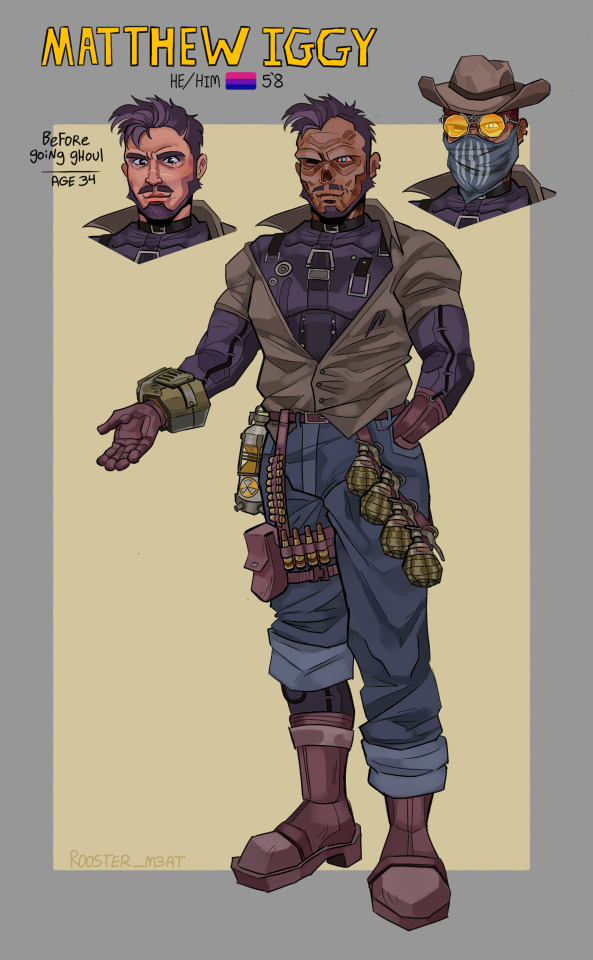

I Finally finished my ref for my Sole Survivor!
a brotherhood boy who got ghouled after having his suit ripped open in the glowing sea
cant wait to draw more of this dude >:)
#fallout oc#fallout#fallout 4#fallout sole survivor#sole survivor#ocs#fallout ghoul#orginal character#sole survivor iggy
395 notes
·
View notes
Text


some comics im doin for classs but i thought id share some roughs :)
#fallout#fallout 4 companions#fallout ghoul#fallout 4#fallout 4 fanart#sole survivor iggy#fallout sole survivor#sole survivor#paladin danse
200 notes
·
View notes
Note
sorry if this has been asked before! but I was wondering about your character Iggy...how does it work out that he's a ghoul and a part of the brotherhood? do they allow him to stay once he turns ghoul? does he face any bigotry from other members, especially Danse?
he tried to hide that he got turned into a ghoul but they eventually found him out. pov iggy gets screwed over by the brotherhood big time


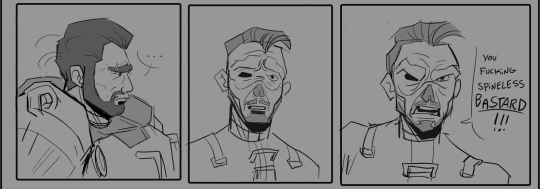
#sole survivor iggy#fallout oc#fallout sole survivor#fallout ghoul#fallout 4#fallout#fallout 4 fanart#paladin danse#elder maxson#arthur maxson#fallout comic
218 notes
·
View notes
Text

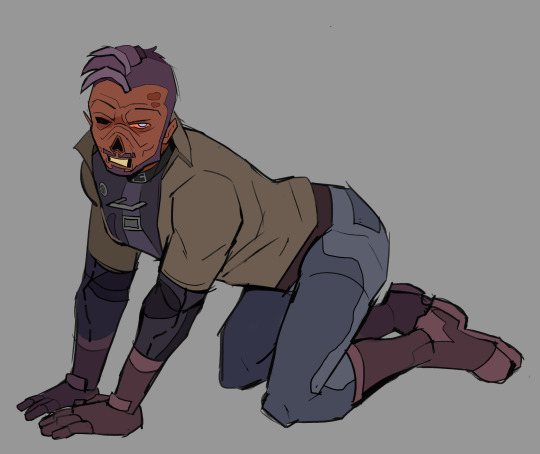
iggy doodles!
#fallout 4#fallout#fallout ghoul#fallout oc#fallout sole survivor#sole survivor#oc#sole survivor iggy
244 notes
·
View notes
Text

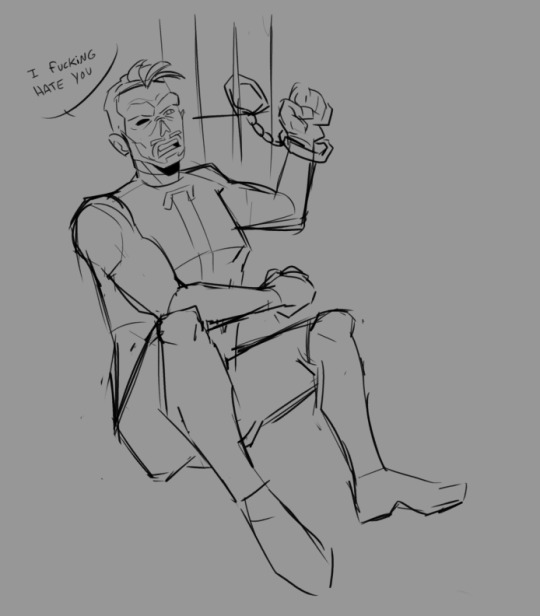
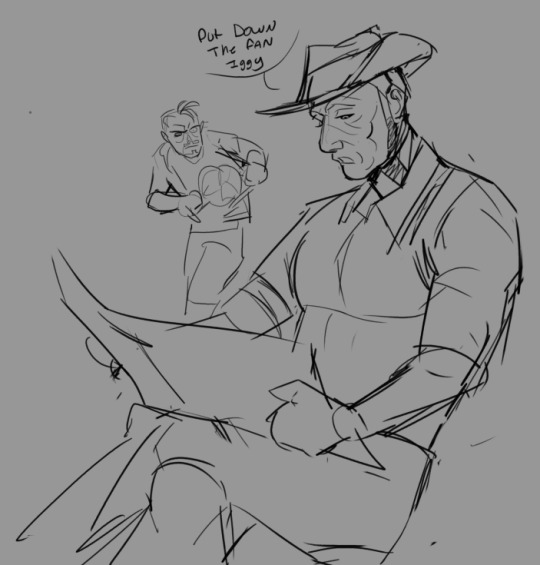
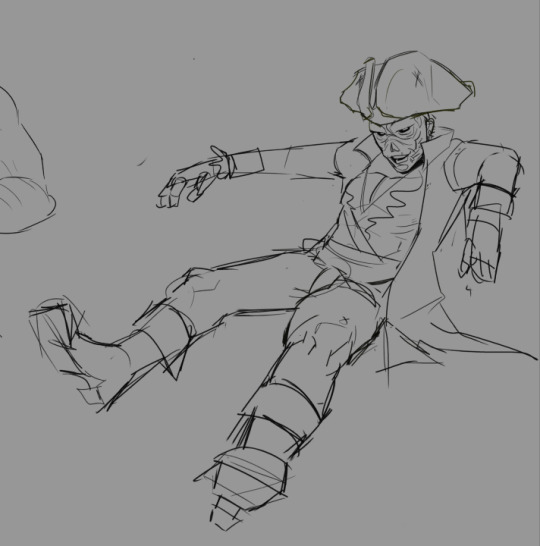


doodles and such im working on!! ill be finalizing these as i go but i thought id share
#fallout#fallout 4 companions#fallout 4#fallout sole survivor#sole survivor#fallout oc#paladin danse#john hancock#nick valentine#sole survivor iggy
317 notes
·
View notes
Text


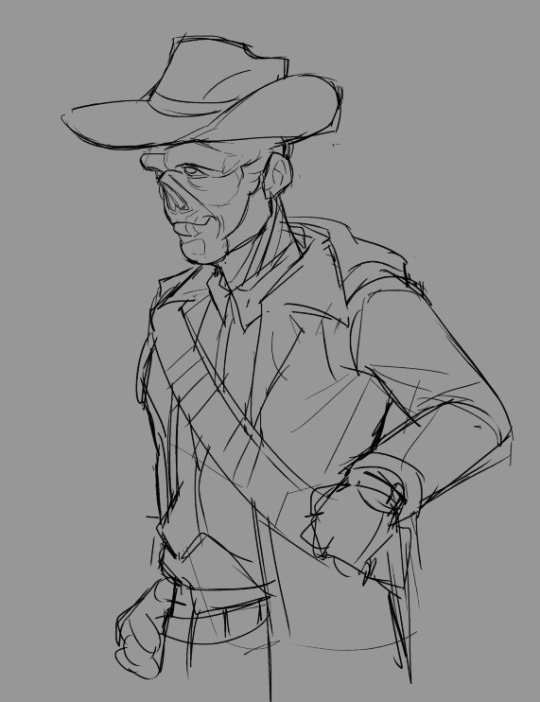
Anyway here’s some wips I will possibly finish smiles
#fallout sole survivor#fallout#fallout 4 fanart#fallout 4#paladin danse#fallout ghoul#sole survivor iggy
131 notes
·
View notes
Text
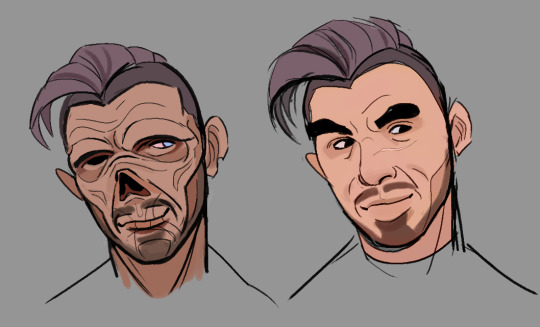
Iggy beloved
128 notes
·
View notes